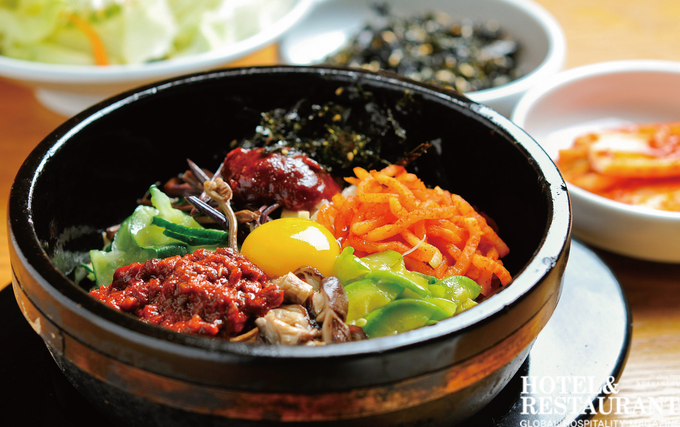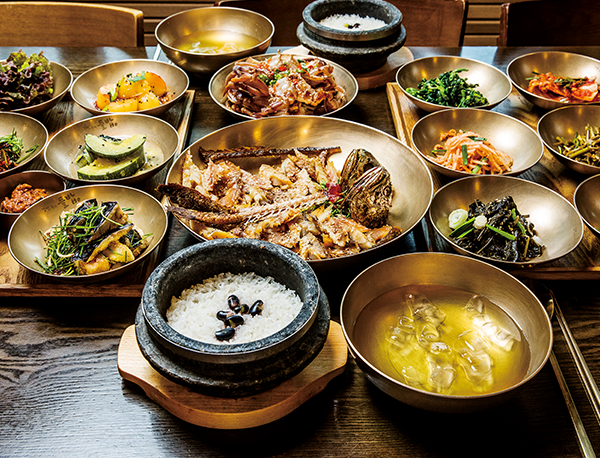Korean cuisine is known for its emphasis on fresh and seasonal ingredients. The country’s culinary traditions have been shaped by its geography, climate, and agricultural practices, resulting in a diverse range of dishes that change with the seasons. From the delicate flavors of spring greens to the hearty stews of winter, Korean seasonal foods offer a unique and delicious dining experience.
쉬운 목차
Spring Delicacies: Fresh Greens and Floral Flavors

Spring is a time of renewal and growth, and Korean cuisine celebrates this with an abundance of fresh greens and floral flavors. One of the most popular spring dishes is naengmyeon, a cold noodle soup made with buckwheat noodles, beef or chicken broth, and various toppings such as sliced cucumber, radish, and pear. The noodles are served in a chilled broth, making it a refreshing and light meal perfect for warmer weather.
Another spring delicacy is ssukguk, a soup made with mugwort leaves. Mugwort is a herb that grows wild in Korea during the spring season and has a slightly bitter taste. The leaves are boiled to make a flavorful broth, which is then served with rice cakes and other vegetables. Ssukguk is believed to have detoxifying properties and is often consumed during the spring to cleanse the body after the heavy winter diet.
Summer Treats: Refreshing Dishes to Beat the Heat
Summer in Korea can be hot and humid, so it’s no surprise that the cuisine focuses on refreshing dishes to help beat the heat. One popular summer dish is samgyetang, a chicken soup made with ginseng, jujubes, garlic, and glutinous rice. The soup is believed to have medicinal properties and is often consumed during the hottest days of summer to boost energy and strengthen the body.
Another summer treat is bingsu, a shaved ice dessert topped with various sweet toppings such as red bean paste, fruit, and condensed milk. Bingsu is a popular dessert in Korea and is enjoyed by people of all ages. It provides a cool and refreshing respite from the summer heat and is often shared with friends and family.
Autumn Harvest: Rich and Robust Flavors of the Season
Autumn in Korea is a time of harvest, and the cuisine reflects this with rich and robust flavors. One popular autumn dish is galbijjim, a braised beef short rib dish. The ribs are marinated in a mixture of soy sauce, sugar, garlic, and other seasonings, then slow-cooked until tender. The result is a flavorful and succulent dish that is perfect for cooler autumn evenings.
Another autumn favorite is hobakjuk, a pumpkin porridge made with glutinous rice flour, pumpkin puree, and sweetened with honey or sugar. The porridge has a smooth and creamy texture and is often served as a dessert or snack. It’s a comforting and nourishing dish that showcases the flavors of the season.
Winter Warmers: Hearty Soups and Stews to Keep You Cozy
Winter in Korea can be bitterly cold, so the cuisine focuses on hearty soups and stews to keep you warm and cozy. One popular winter dish is kimchi jjigae, a spicy stew made with fermented kimchi, pork belly, tofu, and other vegetables. The stew is simmered for hours to develop rich flavors and is often served with a bowl of steamed rice.
Another winter favorite is dakbokkeumtang, a spicy braised chicken dish. The chicken is marinated in a spicy sauce made with gochujang (Korean chili paste), soy sauce, garlic, ginger, and other seasonings, then simmered until tender. The result is a flavorful and warming dish that is perfect for cold winter nights.
Traditional Korean Cuisine: A Blend of History and Culture

Korean cuisine has a long and rich history that dates back thousands of years. It has been influenced by various factors, including the country’s geography, climate, and cultural traditions. Traditional Korean dishes are often made with simple and natural ingredients, reflecting the country’s agricultural heritage.
One of the defining characteristics of traditional Korean cuisine is the emphasis on balance and harmony. Meals are typically composed of a variety of dishes, including rice, soup, meat or fish, and various side dishes. The flavors are often bold and intense, with a combination of sweet, sour, salty, and spicy elements.
The Art of Fermentation: Kimchi and Beyond
Fermentation is an integral part of Korean cuisine and plays a crucial role in creating flavor and preserving food. One of the most famous fermented foods in Korea is kimchi, a spicy cabbage dish that is eaten with almost every meal. Kimchi is made by fermenting cabbage with salt, chili pepper flakes, garlic, ginger, and other seasonings. The fermentation process gives kimchi its distinctive tangy flavor and helps to preserve it for long periods.
In addition to kimchi, there are many other types of fermented foods in Korean cuisine. Doenjang is a fermented soybean paste that is used as a base for soups and stews. Gochujang is a fermented chili paste that adds heat and depth to many Korean dishes. These fermented foods not only add flavor but also provide health benefits, as they are rich in probiotics and other beneficial bacteria.
Vegetarian and Vegan Options: Delicious Meat-Free Meals
While Korean cuisine is known for its meat-based dishes, there are also plenty of delicious vegetarian and vegan options available. One popular vegetarian dish is bibimbap, a rice bowl topped with various vegetables such as spinach, bean sprouts, carrots, and mushrooms. The dish is often served with a fried egg on top and a spicy sauce called gochujang.
Another vegetarian favorite is japchae, a stir-fried noodle dish made with sweet potato noodles and a variety of vegetables. The noodles are cooked until tender and then tossed with soy sauce, sesame oil, and other seasonings. Japchae is a flavorful and satisfying dish that can be enjoyed on its own or as a side dish.
Fusion Cuisine: Korean Ingredients in Global Dishes
Korean cuisine has gained popularity around the world, and its flavors and ingredients have been incorporated into global dishes. One example of this is Korean fried chicken, which has become a popular street food in many countries. Korean fried chicken is made by double-frying chicken wings or drumsticks until crispy, then tossing them in a sweet and spicy sauce made with gochujang.
Another example of fusion cuisine is Korean tacos, which combine the flavors of Korean barbecue with the format of a Mexican taco. The tacos are typically filled with marinated grilled meat, such as bulgogi or spicy pork, and topped with kimchi, pickled vegetables, and other Korean condiments. The result is a delicious and unique combination of flavors.
Pairing Korean Wines and Spirits with Seasonal Foods
Korea has a rich tradition of winemaking and distilling, and its wines and spirits offer unique flavors that can be paired with seasonal Korean dishes. One popular Korean wine is makgeolli, a traditional rice wine that is slightly sweet and fizzy. Makgeolli pairs well with spicy dishes such as kimchi jjigae or dakbokkeumtang, as the sweetness helps to balance the heat.
Another popular Korean spirit is soju, a clear distilled liquor made from rice or other grains. Soju has a clean and smooth flavor and is often enjoyed with grilled meat dishes such as samgyeopsal (pork belly) or galbi (marinated beef short ribs). The light and refreshing nature of soju makes it a perfect accompaniment to grilled meats.
In conclusion, Korean seasonal foods offer a diverse range of flavors and ingredients that change with the seasons. From the fresh greens of spring to the hearty stews of winter, Korean cuisine celebrates the bounty of each season. Whether you’re enjoying a bowl of naengmyeon on a hot summer day or a steaming bowl of kimchi jjigae on a cold winter night, Korean seasonal foods provide a delicious and satisfying dining experience.
If you’re a food lover and planning a trip to Korea, you must check out this article on Korean Seasonal Foods. It provides a comprehensive guide to the delicious and diverse culinary delights that change with each season in Korea. From the vibrant spring flavors of cherry blossoms and fresh greens to the hearty winter dishes like hot pot and grilled fish, this article covers it all. For more information on Korean cuisine and travel tips, visit Korea Traveler’s website at https://koreatraveler.kr/sample-page/.
답글 남기기